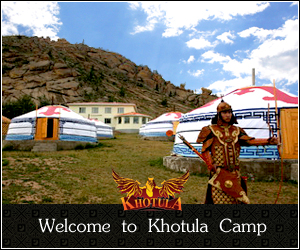Folk Dances
Biyelgee Dancing
Twisted, distorted “snaky people,” or contortionists, perform the type of classical Mongolian dancing probably most familiar to people outside Mongolia. The “Biyelgee” dance, or dance of the body, is particular to the people of western Mongolia. It is performed to the music of Mongolian national musical instruments, such as the morin khuur (horse head fiddle) and theyochin (similar to the xylophone.) Biyelgee is traditionally performed on the rather limited space before the hearth, so the dancers make practically no use of their feet. Instead, the dancers principally use only the upper part of their bodies, and through their rhythmic movements express various aspects of their identities, such as sex, tribe, and ethnic group.
Chonon Khar
Dances imitating the gait of a horse, such as the Chonon khar and Jalam khar, are in general very popular amongst the Derbets, Bayads, Torguts, Khotons and Zakhchins of western Mongolia. Each nationality, however, performs them in its own way. The Bayads, for instance, dance on half-bent legs, with the lower part of the body motionless. The Zakhchins squat as they dance, with the body inclined forward. The ability to dance without using one’s feet at all is the ultimate achievement in the art.












